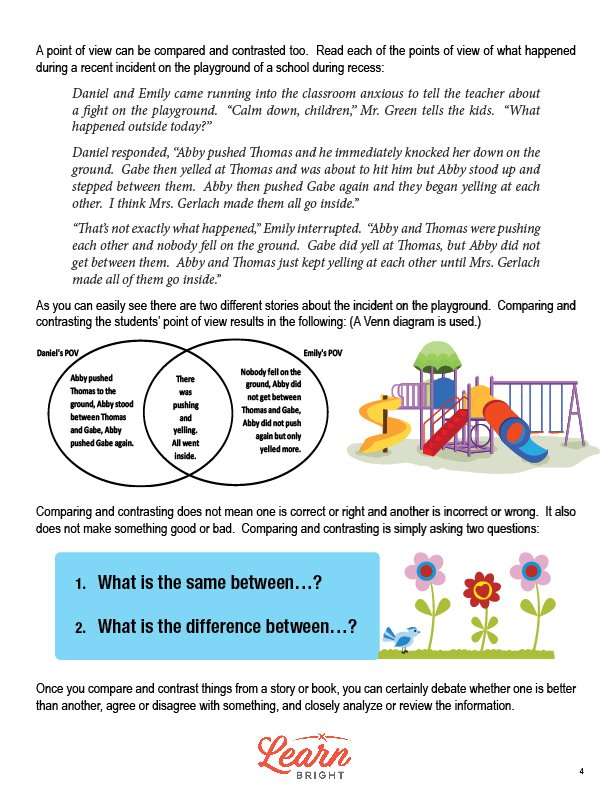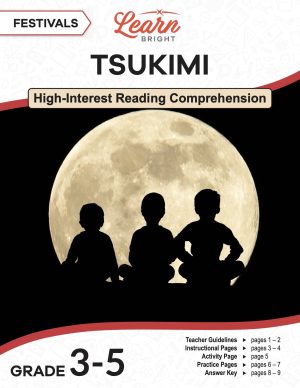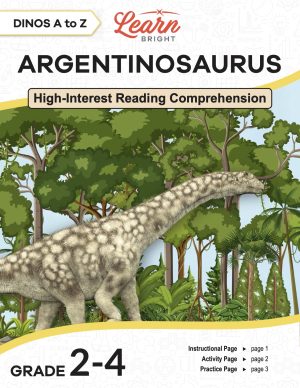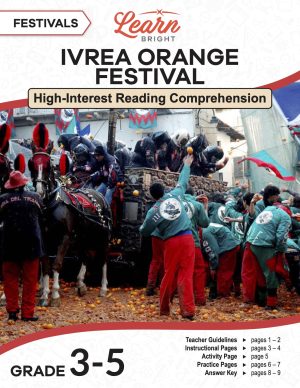Description
What our Comparing and Contrasting (Grades 4-6) lesson plan includes
Lesson Objectives and Overview: Comparing and Contrasting prepares students to compare and contrast characters, events, points of view, and other elements found in a story and in other reading content. This lesson encourages peer discussion to spur brainstorming and allows the opportunity for students to draft an introductory paragraph and to make inferences from text. This lesson is for students in 4th grade, 5th grade, and 6th grade.
Classroom Procedure
Every lesson plan provides you with a classroom procedure page that outlines a step-by-step guide to follow. You do not have to follow the guide exactly. The guide helps you organize the lesson and details when to hand out worksheets. It also lists information in the orange box that you might find useful. You will find the lesson objectives, state standards, and number of class sessions the lesson should take to complete in this area. In addition, it describes the supplies you will need as well as what and how you need to prepare beforehand. The only supplies you will need for this lesson are the handouts. To prepare for this lesson ahead of time, you can find two pictures to display for the opening of the lesson and copy the handouts.
Options for Lesson
Included with this lesson is an “Options for Lesson” section that lists a number of suggestions for activities to add to the lesson or substitutions for the ones already in the lesson. The first three optional adjustments or additions to this lesson are for the lesson activity. The first is to allow students to work on their own for the first part of the activity, and then work with a partner to compare and contrast. For the activity, you can also choose characters from a novel that your students have read. Finally, you can add things or ideas for the activity. Outside of the activity, you can have students use current reading content for practice. You can also assign more than one topic for the homework, and have students exchange their homework assignments and compare and contrast the stories.
Teacher Notes
The teacher notes page includes a paragraph with additional guidelines and things to think about as you begin to plan your lesson. It notes that the skills that students learn and develop during this lesson will help them become better writers, especially when writing compare and contrast essays. This page also includes lines that you can use to add your own notes as you’re preparing for this lesson.
COMPARING AND CONTRASTING (GRADES 4-6) LESSON PLAN CONTENT PAGES
Comparing and Contrasting
The Comparing and Contrasting (Grades 4-6) lesson plan includes three pages of content. The lesson begins by stating that people compare and contrast all day long, whether it’s TV shows, books, or food. You might compare and contrast your friends. Maybe both of them play sports (compare), but only one likes science fiction and the other likes horror (contrast). If you want to see a movie like Star Wars, you would use this information and only invite the friend who likes science fiction. Learning how to compare and contrast can be useful in your personal life. You can compare and contrast characters, events, topics, points of view, cultures, and more.
Stories usually have characters, all of whom have different personalities and traits. Things like stories, movies, and books often have a good character and an evil character. You can usually easily contrast these characters. They may also have some things in common that you can compare. The lesson includes the example of the Three Pigs. In this story, the pigs are good and the wolf is evil (contrast), but all of the characters show determination (compare).
You can also compare and contrast the actions or events in a story. The lesson includes an example of comparing and contrasting the effects of a flood versus the effects of an earthquake in the same city. Both events damaged buildings and closed schools for a week (compare). For the flood, there were warnings, but for the earthquake, there was no warning (contrast).
You can compare and contrast points of view as well. The lesson includes an example of this using a story about an incident on a playground, and compares and contrasts the points of view of the two characters in the story using a Venn Diagram. When you compare and contrast, it’s important to remember that one thing is not right and the other is wrong, or good and bad. All you need to do is ask two questions: What is the same? What is different? After comparing and contrasting, you can use that information to debate whether some is better than something else. It can help you closely analyze two or more things.
It is also possible to compare and contrast cultures when reading a story or novel. Novels often include characters from different cultures, places, or backgrounds. You can compare and contrast to discover what is different or the same about different places or cultures. It can help you learn new things and interesting information. Often, you’ll discover that different cultures are more alike than you originally thought!
Try looking for the things that are the same and different the next time you read a story. Pay attention to the characters, events, behaviors, actions, points of view, cultures, and anything else you’d like to. Comparing and contrasting can help you learn more about and gain a deeper understanding of whatever topic you’re reading about.
COMPARING AND CONTRASTING (GRADES 4-6) LESSON PLAN WORKSHEETS
The Comparing and Contrasting (Grades 4-6) lesson plan includes three worksheets: an activity worksheet, a practice worksheet, and a homework assignment. You can refer to the guide on the classroom procedure page to determine when to hand out each worksheet.
COMPARE AND CONTRAST ACTIVITY WORKSHEET
Students will work with a partner to complete the activity worksheet. Each pair will compare and contrast several personal things or ideas (such as “hair and eye color”, “type of house and neighborhood”, and “family”) with their partner using the accompanying chart. They will discuss each topic and then write their responses in the correct column of the chart. Once they’re finished, they will choose five ideas and write an introductory paragraph about themselves, which they will read aloud to the class. They can use the lines provided on the worksheet to draft their paragraph.
COMPARING AND CONTRASTING STORIES PRACTICE WORKSHEET
The practice worksheet asks students to read two short stories and compare and contrast them. They should compare the stories, characters, and events using the provided chart.
CHOOSE A TOPIC HOMEWORK ASSIGNMENT
For the homework assignment, students will choose one of three topics to write a short story about.
Worksheet Answer Keys
This lesson plan includes an answer key for the practice worksheet, though it notes that students’ answers will vary. If you choose to administer the lesson pages to your students via PDF, you will need to save a new file that omits this page. Otherwise, you can simply print out the applicable pages and keep these as reference for yourself when grading assignments.










